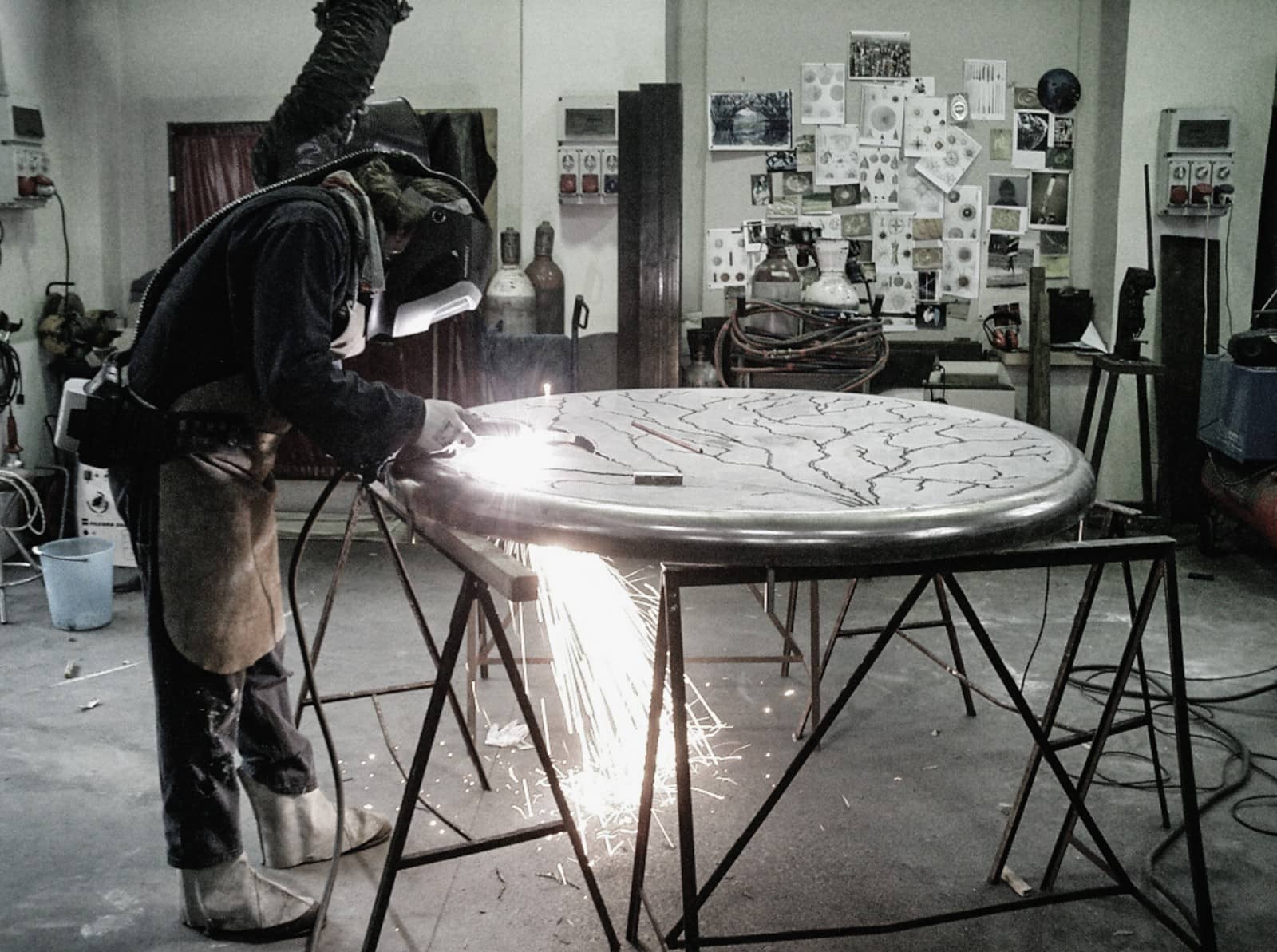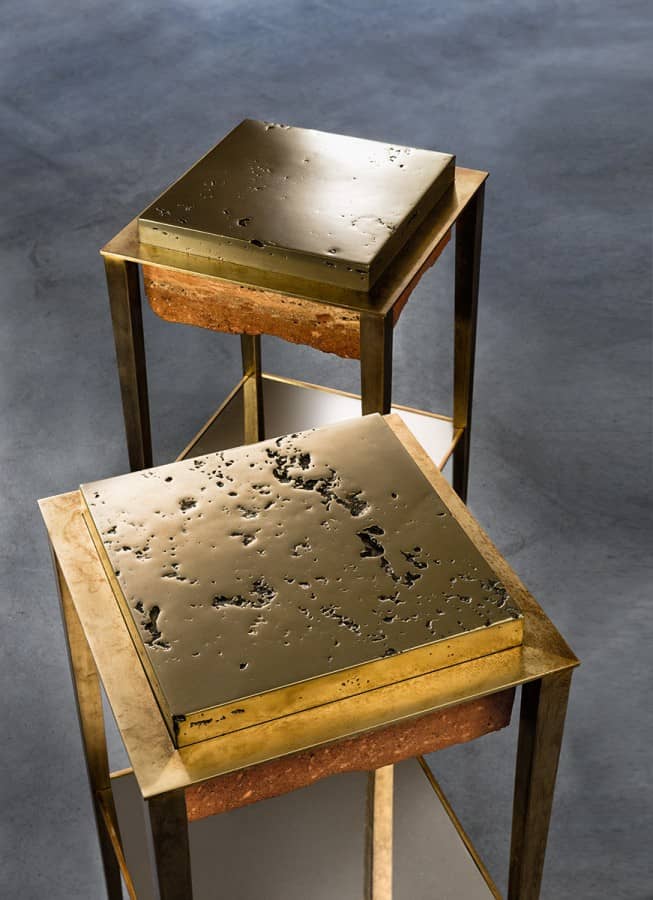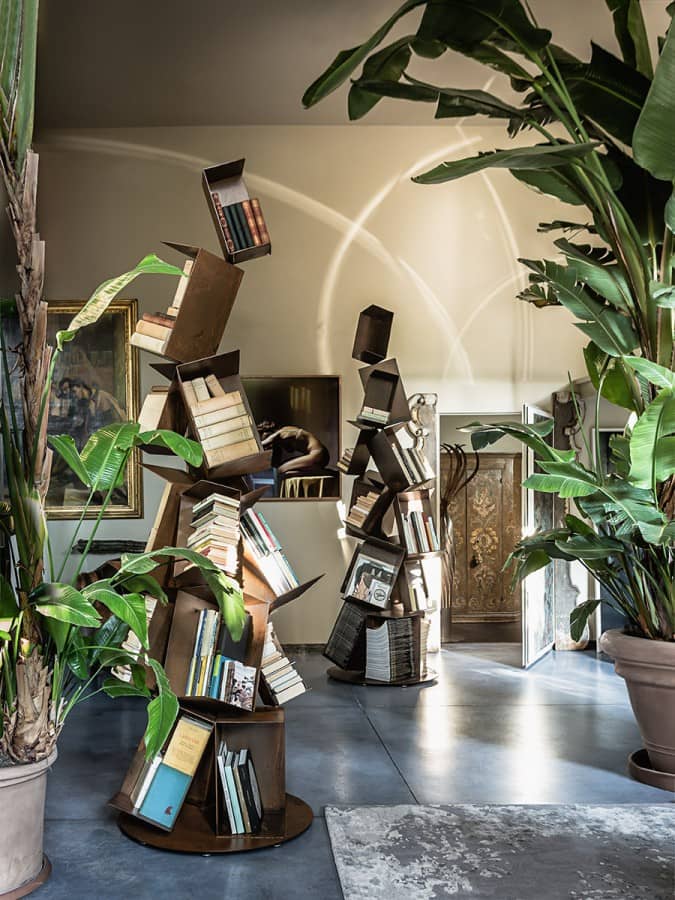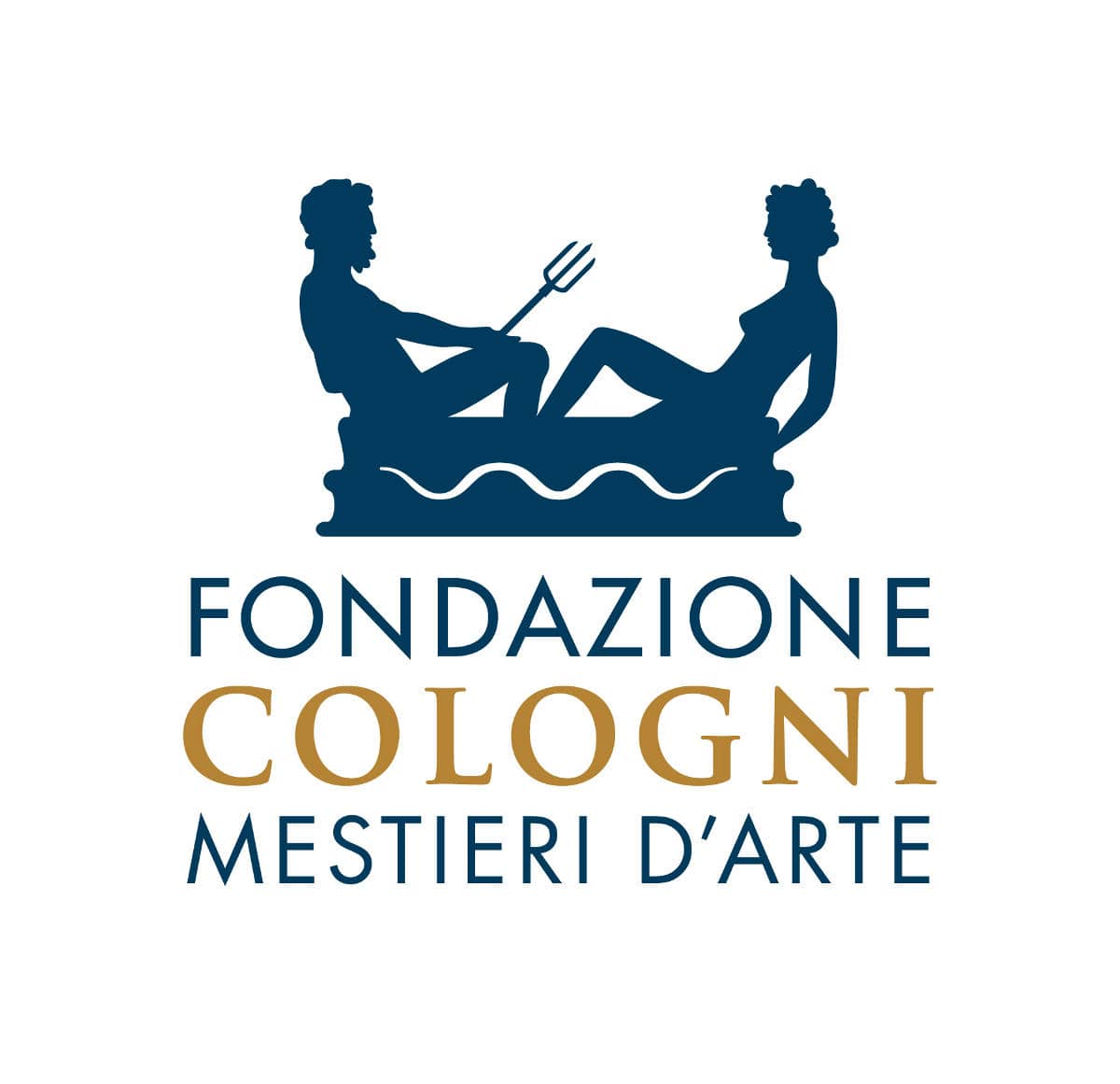
Gianluca Pacchioni
The atelier of Gianluca Pacchioni, master in the art of forging metals and recently nominated among the 75 MAM-Maestro d’Arte e Mestiere, that encompass some of the most talented artisans in Italy, is in Milan: in particular, it is located in a building from the Thirties which used to be an eye-drops factory.
Which is your history?
After a degree at the Bocconi University in Milan, I moved to Paris.
Here, during the 90s, I got in touch with the artistic universe of the French capital and I discovered my passion for metal sculpting: I started to practice it first as a self-taught apprentice, in a studio shared with other artists at Quai de la Gare. These experimentations led to my very first collection of metal sculptures: pieces of furniture presented by the Vivendi Gallery in Place des Vosges.
These were intense years, during which I absorbed beauty and creativity taking part in the artistic life of the city, attending the ateliers and the underground squats. Paris is democratically open to the young artists: there is a culture of sharing and easy access to the teachings and public subsidies.
But the artisanal realization of the pieces is something else: it is much more difficult to make your own project come true.
My return to Milan was necessary to work in close connection with the Italian artisans, and to treasure their expertise and creativity.
The transition from designer to “homo faber”, that marked my history, derives from this close relation with craftsmen.
Which training have you followed? How did your education influence the choice of your profession?
I am a self-made artist. I invented my technique and my style.
My professional growth is the result of a series of meetings, of attending wonderful workshops with craftsmen and artists that sometimes inspired me, sometimes gave me their tools and machines; but most of all, they were a continue source of inspiration.
I personally follow all the aspects of the creative and productive process, in my Milanese atelier where I settled the forge and the laboratories in 1998.
Tell us how your works come to life. Where do you find your inspiration?
I love the material, I love its imperfections, its scars. I love contrasts and I try to highlight them.
I spend entire days abusing these metals but at the end I touch them, I caress them.
Formally, I find useful inspiration in the vegetal world; but the aesthetic research is never ending.
In this last period I’m exploring the porosity and the surfaces of the stone: at Salone del Mobile in Milan I presented “Cremino”, a sculptured table in Persian red travertine, partially covered with liquid brass, requiring accurate formal research. The experimentation continues, then, in the big decorative panels “Fossile”, with bas-reliefs of different palm leaves in liquid brushed brass with the aim to transform the vegetable print in an immutable fossilized deration.

Which materials and which techniques do you use?
My research and my investigation never come to an end: from iron and all its patinas, to stainless steel, to bronze, brass, aluminium, patinas and experimental techniques of liquid cold metals.
The laboratory realizes works with innovative workings and techniques, mixing them with traditional ones like forging or fusion, or in a dialogue with the goldsmith’s ones.
For example, the technique of the liquid metal becomes a new filter I can revisit and rework with some of the historical pieces of my collection, like the lightning sculptures “Cut” or the sculptured mirror “Pupil”.
The pieces, nowadays created with these techniques, allow me to add endless variations. A very important part of the process is the one concerning the patinas previously obtained, with waxes created ad hoc for every need.
Who is you customer?
My customers often are not Italian: they are international connoisseurs searching for the quality of the Italian excellence and respecting the production times of unique pieces.
Do you think that young generations could be interested to follow in your footsteps?
Unfortunately, I don’t think that young generations are really interested to “get their hands dirty” though, during my last exposition in Milan, I met lots of curious and smart students interested in the techniques of my works. Their questions were really focused. It could be a positive sign!
Gianluca Pacchioni
Via Druso 2
20133 Milano
+39 02 70121262
www.gianluca-pacchioni.com
talkto@gianluca-pacchioni.com


